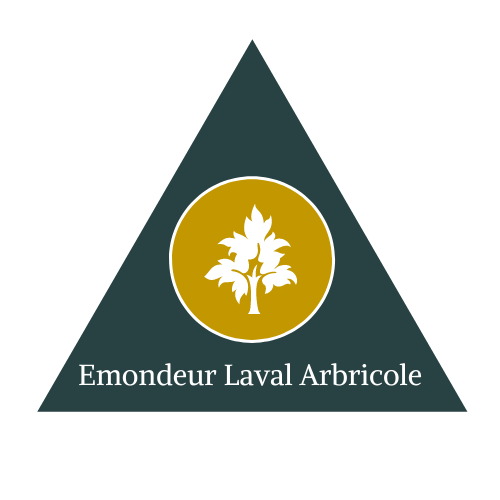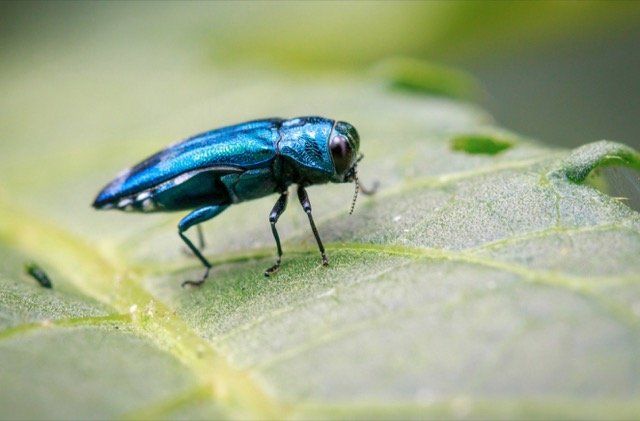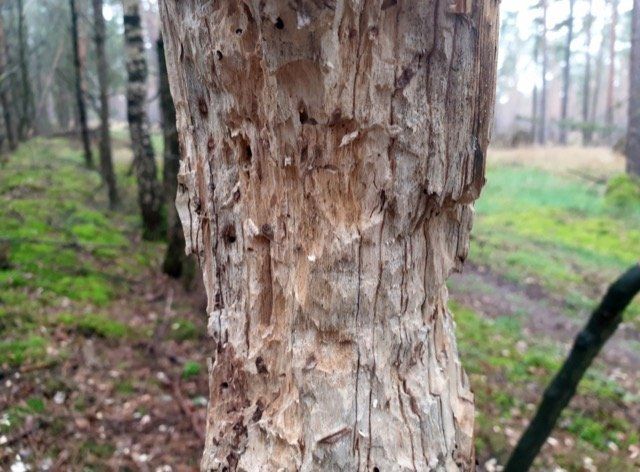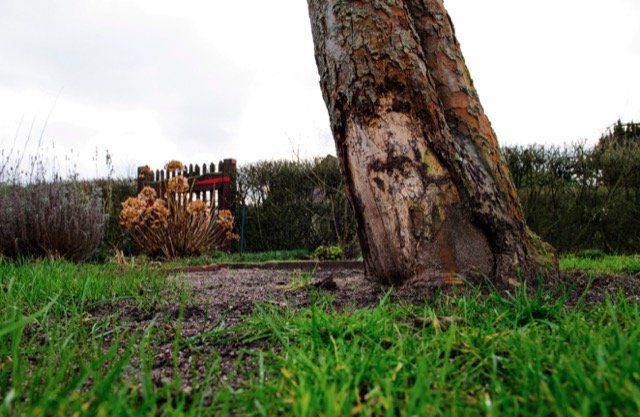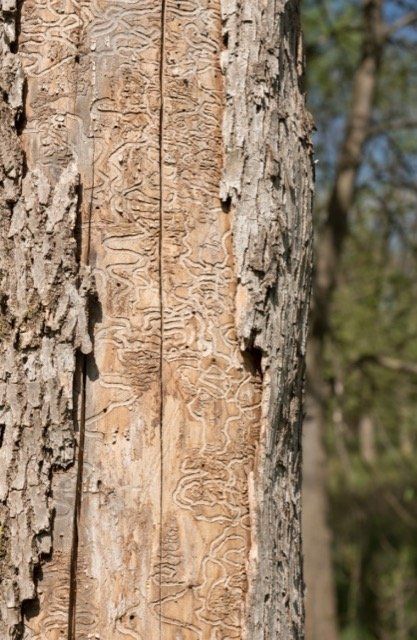The emerald ash borer is an Asian beetle that infests ash trees in the northern United States. The emerald ash borer has been present in Canada since 2002. This hardy beetle has since spread east to Massachusetts and west to Colorado, largely due to people transporting ash trees or infested wood to other areas.
Émondeur Laval Arbricole
Emerald Ash Borer detection in Laval
The emerald ash borer is a flying insect with a bright green shadow on its body. During its life the emerald ash borer is present in two stages: the larval stage and the adult stage. Emerald ash borer is most dangerous in its larval stage.
They feed from the heart of the tree and leave it without internal stock to survive, it lives in the tree and builds galleries. The creamy white larvae reach a length of 32 mm at maturity. The damage caused by the larvae may take several years to become apparent. One can also spot the presence of eggs that are white at first, but turn dark red as they develop.
It is therefore possible that a tree is infected with the emerald ash borer but it is not known until the adult stage begins to eat the leaves of the tree. As an adult, it reaches half an inch in length and eats the leaves of the tree.
Free estimate
Soumission Emondage Laval
How to spot it?
To find out if your tree is infested, it will be easier for you to spot the adults from June to August, when they fly in search of partners. To identify the emerald ash borer, you must learn to recognize the signs of an infestation.
Unfortunately, emerald ash borer symptoms don't become evident until two or more years after the emerald ash borer has entered a tree. Another way to be able to spot their presence and the observation of the holes in the tree in the form of D which mark the appearance of the adults. Splitting bark and dieback foliage can also herald pest problems. Just below the bark, S-shaped larval galleries confirm the presence of the emerald ash borer. Another possible sign to observe is the abundance of samaras, which indicates that the tree is under stress. The samaras are the seeds of the ash tree. Preventive measures can be taken. However, for this it is important to be able to detect the signs or symptoms of infestation as early as possible using a team like ours, bearing in mind that they start in the upper part of the tree. .
Visible signs include cracks, peeling, bark discoloration or dripping of sap. These are all signs of damage the larvae are inflicting on the tree. As a result, the sap can no longer circulate. As soon as the top half of an ash tree becomes diseased, the tree should be felled. However, it is preferable to avoid felling the tree from mid-March to the end of September, during this period the emerald ash borer proliferates.
At this point, it is too late to talk about prevention. To be able to detect the most subtle signs, it is advisable to have your ash tree checked annually by a professional. It is also necessary to know how to distinguish this insect from others, according to the signs and symptoms, in order to be able to apply the right treatment.
What is the damage to the tree?
As mentioned earlier, the larvae hatch from the eggs of the ash tree bark and then burrow into the tree to feed on it. This invasion disrupts the nutritional system of the tree by killing it little by little. Early detection can be difficult, but it is essential to prevent the spread. Start by learning the general signs of a sick or dying tree. It is also important to also look for the holes created by the larvae and the subsequent loss of bark - the first signs of an emerald ash borer infestation.
As the larval stage evolves, the tree sheds its leaves from the top to the bottom of the tree. Sometimes it is also possible to see vertical cracks in the bark under which the larvae feed. Insects on trees and more concretely, adult larvae also leave D-shaped holes when they emerge from a tree. As a general rule, it is very difficult to get rid of this insect, the treatments are also complicated to apply because there are no natural predators for the emerald ash borer. This makes it impossible to achieve any biological control of the tree in a natural way.
The degradation process goes through 4 stages:
- The first lasts 2 to 3 years, it is difficult to detect the signs of the presence of the insect before because they are not really visible.
- The second stage includes the degradation of the leaves of the tree, the yellowing of the leaves in mid-summer, and the crowns begin to lose their leaves.
- During the third stage, about a year after the previous one, the clearing of the crowns becomes more evident.
- The fourth and final stage occurs the following year, the bark of the tree crumbles and the ash eventually dies.
Treatments
Prevention is the best way to keep your tree healthy. The first step is to have your tree inspected by a professional annually, who can also determine if there are other conditions that should also be addressed.
There are four types of treatment for emerald ash borer:
- Injection on the ground
- Injection on the level of the trunk
- Injection on the level of the ground and the trunk (the most common treatments because they treat the whole tree)
- There are also emerald ash borer treatments that are preventative. However, it is essential to choose a product with a sufficiently high level of concentration and to apply the right dosage at the right time.
A specialized protocol is used to detect emerald ash borer larvae. It is important to apply it before the first symptoms are visible. It is a technical process that requires precision and, therefore, should be reserved for professionals. The branches that will be treated are methodically selected according to precise criteria. Then the bark is removed, the best seasons to carry out these treatments are during the autumn and winter seasons.
This is why Émondeur Laval offers you its services to detect the presence of the emerald ash borer and offer you the most effective treatment or the felling of your tree. If you want to have more information on the subject and learn more about our services, fill out the contact form or call us at (450) 231-7333.
